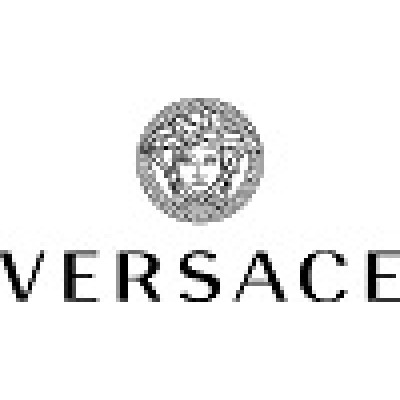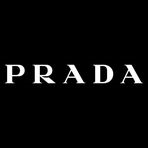Prada and Versace: A New Era in Italian Luxury Fashion
April 11, 2025, 4:43 pm
In a bold move that reshapes the landscape of luxury fashion, Prada has acquired Versace for $1.37 billion. This deal, announced on April 10, 2025, is more than just a financial transaction; it’s a strategic alliance that aims to create a powerhouse in Italian fashion. The merger combines two iconic brands, each with its unique flair and heritage, and sets the stage for a new chapter in luxury retail.
Prada, known for its minimalist elegance, has long been a stalwart in the fashion industry. Versace, on the other hand, is synonymous with bold, baroque designs that scream opulence. This acquisition is like mixing oil and water, yet it promises to create a vibrant new blend. The two brands have distinct identities, and that’s precisely what makes this merger intriguing.
The backdrop of this acquisition is a luxury market facing challenges. Prada has managed to thrive despite a slowdown in demand for high-end goods. Meanwhile, Versace has struggled, operating at a loss in recent quarters. The union offers a lifeline to Versace, allowing it to leverage Prada’s robust infrastructure and market presence. It’s a classic case of survival of the fittest, where collaboration becomes the key to overcoming adversity.
Prada’s marketing director, Lorenzo Bertelli, emphasized that there are no overlaps in creativity or customer bases. This statement underscores the potential for cross-pollination. Prada can attract Versace’s clientele, while Versace can benefit from Prada’s established customer loyalty. It’s a win-win scenario, akin to two rivers merging to create a more powerful current.
The acquisition comes on the heels of significant changes within Versace. Donatella Versace, the brand’s creative force since her brother Gianni’s tragic death in 1997, recently announced her departure as chief creative officer. This transition opens the door for new creative directions and fresh ideas. Prada’s leadership, particularly under CEO Andrea Guerra, aims to revitalize Versace while honoring its legacy. The focus is on long-term growth rather than immediate cost-cutting measures.
Financially, the deal is striking. Prada’s purchase price is a significant reduction from the $2.15 billion that Capri Holdings, formerly known as Michael Kors, paid for Versace in 2018. This price drop reflects the current market conditions and Versace’s declining sales. Capri had to accept a lower offer, illustrating the pressures facing luxury brands in today’s economy. The acquisition also involves a commitment of 1.5 billion euros in new debt, signaling Prada’s confidence in the potential of this merger.
The luxury fashion industry is currently dominated by French conglomerates, with LVMH leading the pack. Prada’s acquisition of Versace is a strategic move to strengthen Italy’s position in this competitive landscape. By uniting two of the biggest names in Italian fashion, Prada aims to create a formidable rival to the French giants. It’s a chess game, and Prada is making its move to secure a stronger foothold.
The timing of this acquisition is critical. The luxury market is facing headwinds, including economic uncertainty and changing consumer preferences. Prada’s proactive approach contrasts with the more reactive strategies of some competitors. The deal comes amid a global equity sell-off and fears of a recession, making it a bold gamble. Yet, in the world of fashion, risk often leads to reward.
Prada’s roots trace back to a leather goods shop founded in Milan in 1913. The brand has evolved, but its commitment to quality and innovation remains steadfast. Versace, founded by Gianni Versace, is known for its Medusa head logo and extravagant designs. The merger represents a blending of histories, where tradition meets modernity.
The potential for innovation is immense. Prada has a reputation for pushing boundaries, while Versace’s aesthetic is ripe for reinvention. Together, they can explore new creative territories, appealing to a broader audience. It’s like a painter mixing colors on a palette, creating something entirely new and exciting.
As the luxury market continues to evolve, this acquisition could set a precedent for future mergers and collaborations. It highlights the importance of adaptability in a rapidly changing environment. Brands that can innovate and collaborate will thrive, while those that cling to outdated models may falter.
In conclusion, Prada’s acquisition of Versace is a landmark event in the fashion industry. It’s a strategic alliance that promises to reshape the future of luxury fashion. By combining their strengths, these two iconic brands can navigate the challenges of the market and emerge stronger. The world will be watching as they embark on this new journey, eager to see how they blend their distinct identities into a cohesive and compelling narrative. The stage is set for a new era in Italian luxury, and the possibilities are as limitless as the imagination.
Prada, known for its minimalist elegance, has long been a stalwart in the fashion industry. Versace, on the other hand, is synonymous with bold, baroque designs that scream opulence. This acquisition is like mixing oil and water, yet it promises to create a vibrant new blend. The two brands have distinct identities, and that’s precisely what makes this merger intriguing.
The backdrop of this acquisition is a luxury market facing challenges. Prada has managed to thrive despite a slowdown in demand for high-end goods. Meanwhile, Versace has struggled, operating at a loss in recent quarters. The union offers a lifeline to Versace, allowing it to leverage Prada’s robust infrastructure and market presence. It’s a classic case of survival of the fittest, where collaboration becomes the key to overcoming adversity.
Prada’s marketing director, Lorenzo Bertelli, emphasized that there are no overlaps in creativity or customer bases. This statement underscores the potential for cross-pollination. Prada can attract Versace’s clientele, while Versace can benefit from Prada’s established customer loyalty. It’s a win-win scenario, akin to two rivers merging to create a more powerful current.
The acquisition comes on the heels of significant changes within Versace. Donatella Versace, the brand’s creative force since her brother Gianni’s tragic death in 1997, recently announced her departure as chief creative officer. This transition opens the door for new creative directions and fresh ideas. Prada’s leadership, particularly under CEO Andrea Guerra, aims to revitalize Versace while honoring its legacy. The focus is on long-term growth rather than immediate cost-cutting measures.
Financially, the deal is striking. Prada’s purchase price is a significant reduction from the $2.15 billion that Capri Holdings, formerly known as Michael Kors, paid for Versace in 2018. This price drop reflects the current market conditions and Versace’s declining sales. Capri had to accept a lower offer, illustrating the pressures facing luxury brands in today’s economy. The acquisition also involves a commitment of 1.5 billion euros in new debt, signaling Prada’s confidence in the potential of this merger.
The luxury fashion industry is currently dominated by French conglomerates, with LVMH leading the pack. Prada’s acquisition of Versace is a strategic move to strengthen Italy’s position in this competitive landscape. By uniting two of the biggest names in Italian fashion, Prada aims to create a formidable rival to the French giants. It’s a chess game, and Prada is making its move to secure a stronger foothold.
The timing of this acquisition is critical. The luxury market is facing headwinds, including economic uncertainty and changing consumer preferences. Prada’s proactive approach contrasts with the more reactive strategies of some competitors. The deal comes amid a global equity sell-off and fears of a recession, making it a bold gamble. Yet, in the world of fashion, risk often leads to reward.
Prada’s roots trace back to a leather goods shop founded in Milan in 1913. The brand has evolved, but its commitment to quality and innovation remains steadfast. Versace, founded by Gianni Versace, is known for its Medusa head logo and extravagant designs. The merger represents a blending of histories, where tradition meets modernity.
The potential for innovation is immense. Prada has a reputation for pushing boundaries, while Versace’s aesthetic is ripe for reinvention. Together, they can explore new creative territories, appealing to a broader audience. It’s like a painter mixing colors on a palette, creating something entirely new and exciting.
As the luxury market continues to evolve, this acquisition could set a precedent for future mergers and collaborations. It highlights the importance of adaptability in a rapidly changing environment. Brands that can innovate and collaborate will thrive, while those that cling to outdated models may falter.
In conclusion, Prada’s acquisition of Versace is a landmark event in the fashion industry. It’s a strategic alliance that promises to reshape the future of luxury fashion. By combining their strengths, these two iconic brands can navigate the challenges of the market and emerge stronger. The world will be watching as they embark on this new journey, eager to see how they blend their distinct identities into a cohesive and compelling narrative. The stage is set for a new era in Italian luxury, and the possibilities are as limitless as the imagination.

